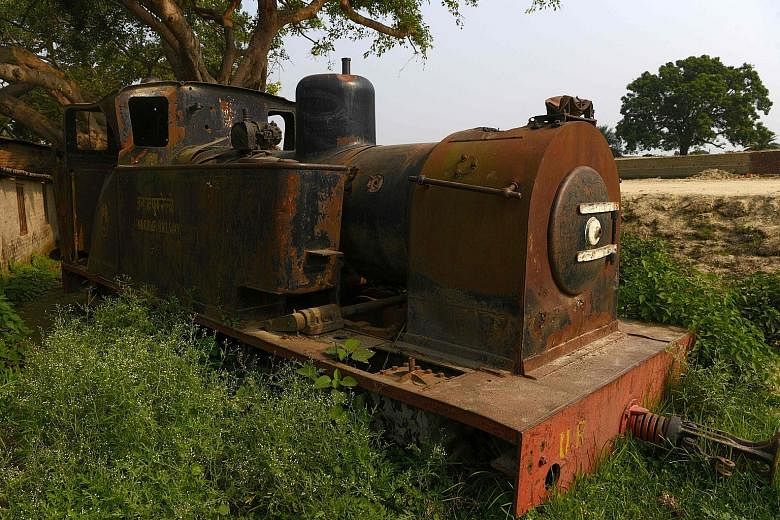JANAKPUR (Nepal) • Three years after its last train hit the buffers, landlocked Nepal is building a new railway network to boost its ailing economy - helped by the rivalry between its powerful neighbours, China and India.
The railway to India was a lifeline for the small southern frontier town of Janakpur, used to import everything from sweets to clothes and cosmetics, and fuelling a vibrant border economy. But it fell into disrepair after years of neglect and since 2014, the train has sat stationary, its rusting carcass now a playground for local children, while Janakpur's markets are empty.
"When the train was running, wehad a lot of business. It was easy for me to provide for my family," said Mr Shyam Sah, whose small family-run cosmetics shop has suffered an 80 per cent drop in profits since the railway closed.
Now it is being rebuilt with Indian backing, one of three new rail lines - one funded by China in the north and a third by Nepal itself - that the country hopes will help boost international trade.
Nepal remains largely isolated from the global economy, dependent on aid and remittances. Growth slowed dramatically after a 2015 earthquake but is expected to normalise at 5 per cent from next year. In recent years, it has courted its two large neighbours for investment in an attempt to plug itself into a rail network that links the far eastern reaches of Asia with Europe.
But geography is not on its side.
The Himalayas form a natural border between Nepal and China, leaving it largely dependent on India - with which it shares a 1,400km open border - for the majority of its imports and exports.
In recent years, Kathmandu has tilted towards Beijing as part of a nationalist drive to decrease the country's reliance on New Delhi. China has responded, ramping up its diplomatic ties with Nepal - mostly through large-scale infrastructure investments.
This year, Beijing pledged US$8.3 billion (S$11.3 billion) to build roads and hydropower plants in Nepal, dwarfing India's commitments of US$317 million. Feasibility studies are also under way for a Beijing-backed railway connecting Kathmandu to Lhasa in Tibet, cutting straight through the Himalayas at an estimated cost of US$8 billion.
Mr Ankit Panda, senior editor at The Diplomat magazine, said that could be a game-changer for the small country. "The rail line with China holds potential, depending on how China allows Nepal to leverage that link for commercial growth opportunities."
But it has strained relations between India and China, who are locked in a standoff in Bhutan sparked by a new road being built by China.
"China knows that its chequebook diplomacy with the smaller Asian states is a sore point with India, which simply cannot afford to put up the kind of capital outlays that the Chinese promise," said Mr Panda.
The project is part of its "One Belt, One Road" initiative, a massive global infrastructure programme to connect Chinese companies to new markets around the world that critics see as a geopolitical powerplay.
AGENCE FRANCE-PRESSE

